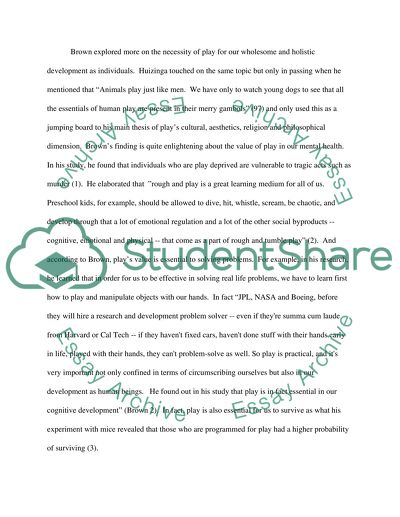Johan Huzinga's chapter and Stuart Brown's lecture arguments and Essay. Retrieved from https://studentshare.org/english/1467028-johan-huzingas-chapter-and-stuart-browns-lecture-arguments-and-supporting-evidences
Johan Huzinga's Chapter and Stuart Brown'S Lecture Arguments and Essay. https://studentshare.org/english/1467028-johan-huzingas-chapter-and-stuart-browns-lecture-arguments-and-supporting-evidences.


